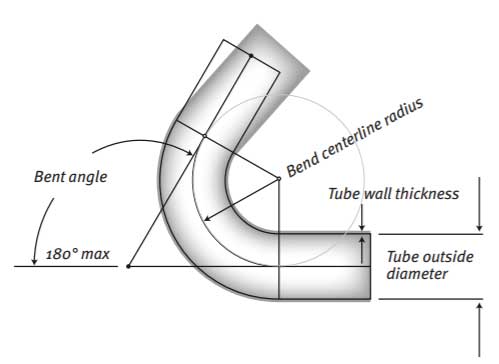Tube Bending
Tube bending is a metal forming process that is used to shape pipes or tubing.
Bending machines take straight tube stock and create a shape involving single or multiple bends. This allows the tubing to be formed in any fashion to fit the application’s specific needs. Round tubes are typically used for tube bending, but square or rectangular tubes can also be bent in order to meet your specific needs.









